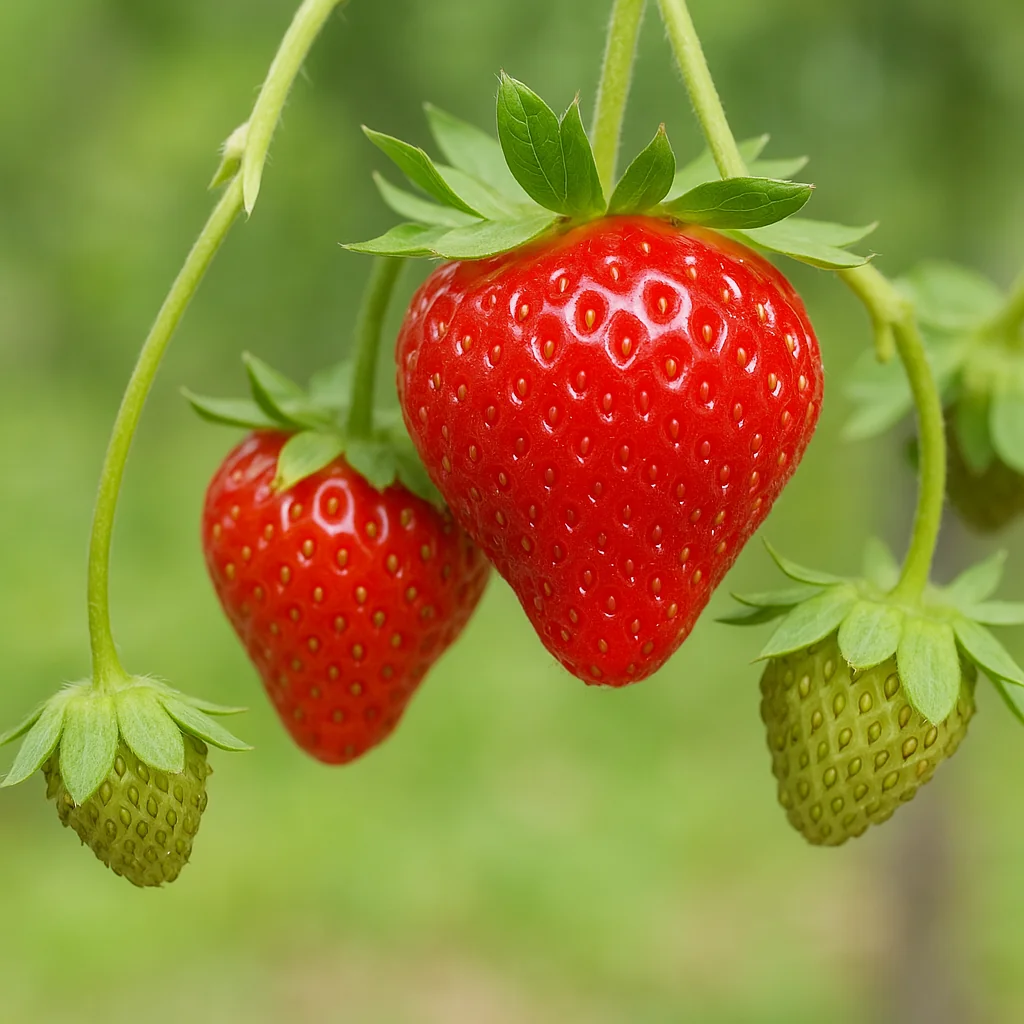If you’re looking to add a burst of color, flavor, and a little extra sweetness to your backyard garden, growing strawberries in your backyard is an excellent choice. Strawberries are not only delicious but also relatively easy to cultivate with the right care. Whether you’re a beginner gardener or an experienced horticulturist, this guide will walk you through everything you need to know to grow strawberries successfully in your backyard.
Why Grow Strawberries in Your Backyard?
Before diving into the specifics of how to grow strawberries in your backyard, it’s important to understand why this is a great choice for your garden. Here are some of the top reasons:
1. Fresh and Flavorful Fruit
There’s nothing quite like the taste of fresh, homegrown strawberries. You’ll get to enjoy berries that are sweeter and more flavorful than anything you can buy at the store.
2. Easy to Grow
Strawberries are relatively low-maintenance plants. With a little care and attention, they can thrive in a variety of growing conditions. They are perfect for both beginners and seasoned gardeners.
3. Versatility
Strawberries can be grown in different ways — from traditional garden beds to containers, hanging baskets, or even vertical gardening systems. This makes them ideal for small and large spaces alike.
4. Health Benefits
Strawberries are rich in vitamins, antioxidants, and fiber. Growing your own means you can enjoy these health benefits at any time, free from pesticides and chemicals.
Now that you’re convinced about the benefits, let’s dive into how to grow strawberries in your backyard successfully!

Step-by-Step Guide to Growing Strawberries in Your Backyard
Step 1: Choose the Right Variety of Strawberry
The first step in growing strawberries in your backyard is choosing the right variety. There are three main types of strawberries you can grow, each suited to different climates and growing conditions:
- June-Bearing Strawberries: These varieties produce a large crop all at once, typically in late spring or early summer. They’re great for those who want to harvest a large quantity of strawberries in a short time.
- Ever-Bearing Strawberries: These varieties produce two to three smaller harvests throughout the growing season, from spring to fall. They’re perfect if you want a more continuous supply of strawberries.
- Day-Neutral Strawberries: These are a type of ever-bearing strawberry that produces fruit continuously throughout the summer, regardless of the amount of sunlight. These are ideal for areas with long growing seasons.
Step 2: Choose the Best Location
Strawberries thrive in areas with full sun — at least 6 to 8 hours of direct sunlight each day. Choose a location in your backyard that gets plenty of sunshine for most of the day.
The soil should also be well-drained. If the ground is too soggy or clay-heavy, consider planting your strawberries in raised beds or containers, which will help improve drainage and soil quality.
Step 3: Prepare the Soil
The key to growing strawberries in your backyard successfully is ensuring your soil is nutrient-rich, well-drained, and slightly acidic. Here’s how to prepare your soil:
- Test the Soil: Strawberries prefer a pH level between 5.5 and 6.8. Use a soil testing kit to check the pH of your garden soil and adjust accordingly by adding lime to raise the pH or sulfur to lower it.
- Add Organic Matter: Enrich your soil by adding compost or well-rotted manure. This will improve the soil’s texture, water retention, and nutrient content, which will benefit your strawberry plants.
- Loosen the Soil: Use a garden fork or tiller to loosen the soil to a depth of about 6 to 8 inches. This will encourage healthy root development and good drainage.
Step 4: Planting Your Strawberries
When it comes time to plant, timing is key. The best time to plant strawberries is in the early spring, as soon as the soil can be worked. Here’s how to plant your strawberries:
- Spacing: Space strawberry plants about 12-18 inches apart to give them enough room to grow. If you’re planting in rows, space the rows 3-4 feet apart to allow for easy access and good airflow.
- Planting Depth: When planting, ensure the crown of the strawberry plant (the part where the roots meet the stem) is level with the soil surface. Planting too deep can suffocate the crown, while planting too shallow can expose the roots to the elements.
- Watering: After planting, water the strawberry plants well to help them settle in. Keep the soil consistently moist throughout the growing season, but avoid overwatering, as this can lead to root rot.
Step 5: Mulching and Caring for Your Plants
Mulching is an essential part of growing strawberries in your backyard. It helps retain moisture, suppresses weeds, and keeps the soil temperature stable. Here’s how to mulch properly:
- Apply Mulch: Use straw, pine needles, or wood chips to mulch around your strawberry plants. Make sure the mulch is about 2-3 inches thick, but keep it away from the crown to prevent rot.
- Weeding: Regularly remove weeds around your strawberry plants to reduce competition for nutrients and water.
- Fertilizing: Apply a balanced fertilizer to your strawberry plants in early spring, just as the plants start to grow. Use a fertilizer that is low in nitrogen but high in potassium and phosphorus to encourage strong root growth and fruit production.
Step 6: Managing Pests and Diseases
Strawberries are susceptible to a few pests and diseases, but with vigilance, you can manage them effectively. Some common issues include:
- Slugs and Snails: These pests can chew holes in your strawberries. You can use organic slug baits or set up beer traps to keep them away.
- Aphids: These tiny insects can damage the leaves and stems of your plants. Spray your plants with a mixture of water and dish soap or use an insecticidal soap to remove them.
- Powdery Mildew: This fungal disease affects the leaves of the plant and can reduce the yield. To prevent powdery mildew, avoid overhead watering, and ensure proper air circulation around your plants.
Step 7: Harvesting Your Strawberries
One of the most rewarding parts of growing strawberries in your backyard is finally harvesting the fruit. Here’s when and how to pick your strawberries:
- When to Harvest: Strawberries are ready to harvest when they are fully red and ripe. This typically occurs 4-6 weeks after the plants flower. If you try to pick them too early, they won’t be as sweet or flavorful.
- How to Harvest: Gently twist or cut the strawberry from the plant, leaving the stem attached. Be careful not to damage the plant while harvesting, as this can reduce future yields.
FAQs: Growing Strawberries in Your Backyard
1. How long does it take to grow strawberries from seeds?
Growing strawberries from seeds takes a bit longer than starting with bare-root plants or seedlings. On average, it takes 4-6 weeks for strawberry seeds to germinate and several months before the plants are mature enough to produce fruit. If you want quicker results, consider purchasing established strawberry plants from a nursery.
2. Can strawberries grow in containers?
Yes, strawberries grow wonderfully in containers. In fact, growing strawberries in containers is a great option if you have limited space or poor soil conditions. Use a large pot or hanging basket with good drainage and fill it with high-quality potting mix. Be sure to water regularly and feed your plants with a balanced fertilizer.
3. How often should I water my strawberry plants?
Strawberries need consistent moisture to thrive, but they don’t like to sit in water. Water your plants deeply about 1-2 times per week, depending on weather conditions. During very hot or dry spells, you may need to water more frequently. Aim to keep the soil moist, but not soggy.
4. How can I protect my strawberries from birds and other pests?
Birds love strawberries, so if you’re growing them in your backyard, it’s essential to protect your fruit. Use netting over your strawberry plants to keep birds away. You can also install scare devices, like shiny objects or garden statues, to deter birds from eating your berries.
5. Do strawberries come back every year?
Yes, strawberries are perennials, meaning they will come back year after year, provided they are well-maintained. However, they may produce fewer berries in subsequent years, so it’s a good idea to replace the plants every 3-4 years to ensure a bountiful harvest.
6. Can I grow strawberries in shaded areas?
While strawberries prefer full sun, they can tolerate some shade, especially in hotter climates where partial shade in the afternoon can help prevent sunburn. However, if you want a larger yield, try to plant them in a location that gets at least 6-8 hours of direct sunlight each day.

Conclusion
Growing strawberries in your backyard is a rewarding experience that brings both beauty and bounty to your garden. With the right care, attention, and growing conditions, you can enjoy fresh, homegrown strawberries throughout the season. Remember to select the right variety, prepare your soil, water regularly, and protect your plants from pests. In return, your strawberry plants will reward you with an abundance of delicious, sweet fruit. Happy gardening, and enjoy the fruits of your labor!

